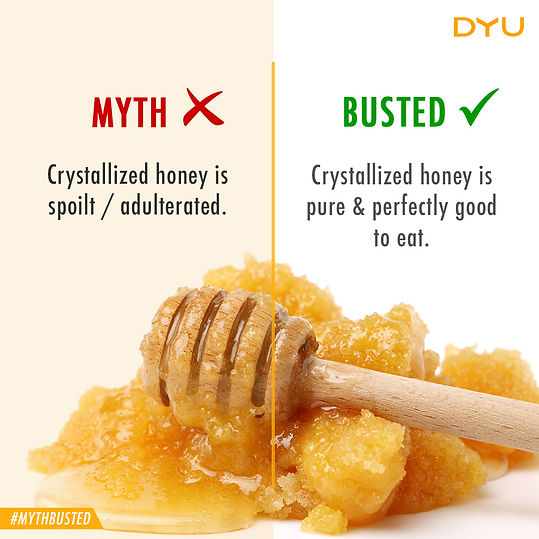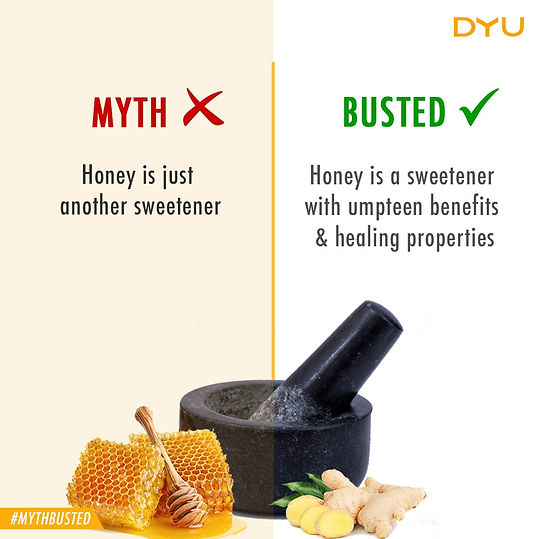Myth Busters
A rulebook to all things honey.
Myths! They say they exist. But no one really talks about them. From our years of experience with honey and honey-based products, here’s everything that we’ve found.
Follow the bee trail to learn it for yourself.

Crystallization
The crystallization of honey is little understood. Many assume that crystallized honey is adulterated or ‘spoiled’.
The crystallization process is natural & spontaneous. Pure, raw & unheated honey has a natural tendency to crystallize over time with no effect on the honey other than color & texture.
The crystallization of honey actually preserves the flavor and quality characteristics of your honey. Many honey users prefer it in this state as it is easier to spread on bread or toast
Organic
Organic honey for us is nectar sourced from organically grown flowers. The honey bee in one foraging trip covers a radius of 5 Kms. Organic Flora cultivation in such a large land area is very difficult, hence organic certification as well. In Agmark tests for the same ingredients and then grade them. DYU Honey is Agmark A grade.


Best Honey
Monofloral honey are honey where the bees have mostly foraged on a single flower. In terms pollen ratio, any single floral pollen ratio if it more than 50% the honey can be classified as monofloral. In case of Manuka its honey from the manuka flower in New Zealand, however that doesnt make it the best as there are many such regional monofloral honey's across the world.













